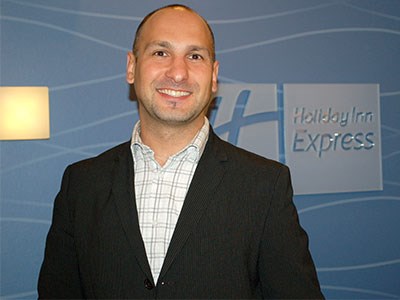Travel to Timmins today, and the accommodation landscape is vastly different from what it was just three or four years ago.
A number of new hotels have popped up in recent years, including a Hampton Inn in 2015, a Holiday Inn Express and Suites in 2013, and a Microtel Inn, also in 2013.
John Crescenzi, manager of the Hampton Inn and founder of Hospitality Organization Strengthening Tourism (HOST), said the city has just about reached a critical mass.
“I think there was a point in time when there were not enough hotels in the market,” he said. “I think that we definitely have enough rooms right now to service the existing demand.”
In the past, he noted, some travellers arranged their day’s itinerary to avoid staying overnight in Timmins because of the dearth of accommodation options. But that’s changed with the number of new builds and upgrades that have taken place.
“We see that virtually every hotel has put in some sort of investment over the last number of years to either upgrade their existing facilities or rebrand their hotels,” Crescenzi said.
“I’m pleased to see it from that side, because when everybody is providing a good, solid product on the accommodation side, I think we have a better chance of winning some larger conferences and events, because the bar was truly raised in all of our facilities.”
Crescenzi noted the city’s recent commitment, in its Culture, Tourism and Recreation Master Plan, to go after more meetings, conferences and conventions. But with the current facilities, the city is somewhat limited in the type and size of conferences it can host, Crescenzi said.
Part of the city’s plan is to examine the possibility of establishing a multi-use recreational facility that could be used for meetings and conferences, which should remedy that.
With an adequate level of accommodations, a number of airlines servicing Timmins, and taxis now offering credit card payment to customers, Crescenzi believes the city has upped its game in servicing its visitors.
Meanwhile, not much movement has been made on a 2014 proposal to introduce a levy on hotels that would help pay for tourism marketing.
Crescenzi believes the idea would need full support from stakeholders to be successful.
“You almost have to have everybody buy into it, or it becomes a difficult process when you only have partial commitment,” he said. “If dollars are spent to market an area, then it would seem to me that an area would benefit from increased tourism.”
Other cities — including Toronto, Ottawa, and Niagara Falls — already have the fee in place. Sault Ste. Marie adopted it in 2005, and the money collected from hotel operators goes toward promoting attractions like the area’s Agawa Canyon Tour Train.




